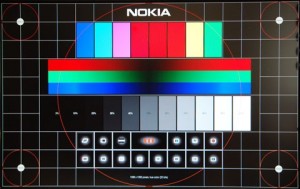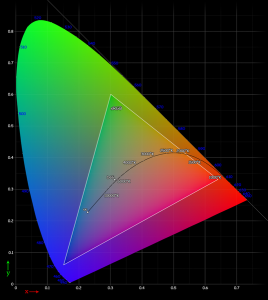Monitors and HDTVs: Can You Trust the Numbers?
 For the past several years, there have seemingly been massive advancements in LCD technology. We’ve seen contrast ratios go from 500:1 up to Infinity; refresh rates have jumped from 60Hz to 960Hz. But is it possible that all of these numbers are just marketing hokum?
For the past several years, there have seemingly been massive advancements in LCD technology. We’ve seen contrast ratios go from 500:1 up to Infinity; refresh rates have jumped from 60Hz to 960Hz. But is it possible that all of these numbers are just marketing hokum?
Manufacturers have invented the term “Dynamic Contrast Ratio.” Realistic contrast ratios are around 1,500:1, but dynamic contrasts state numbers like 1,000,000:1. The top rated PC monitor on alaTest right now, the Asus VG278H lists a 50,000,000:1 “Smart” Contrast Ratio. Samsung’s D8000 Series, the top rated HDTV lists 25,000,000:1
Ultimately, these numbers are completely meaningless. A display’s contrast ratio is a ratio between the brightest and darkest image the display can produce. Dynamic contrast cheats by turning off the display’s backlight when the screen’s image is entirely black, using that as the darkest value. In a real viewing scenario, the entire screen would never be black like that, so you would never see dynamic contrast in action.
Manufacturers have even started to omit true contrast ration specs entirely. Some don’t even use the word “Dynamic” when listing their misleading numbers.
Full backlit LED TVs that can turn off a portion of the screen’s backlight, making dynamic contrast slightly more applicable, but even that scenario rarely occurs in real life viewing. OLED displays are the only ones that can truly take advantage of this concept, but they don’t need dynamic contrast to do it. Unfortunately, OLED TVs are quite rare and expensive right now.
Refresh Rate and Response Times
Manufacturers have started advertising their TVs with “Effective Refresh Rates.” That’s to say, they’ve developed special algorithms that strobe the backlight in order to make a refresh rate of 120-240Hz (such as the Sony Bravia KDL-XBR9) look more like 960Hz – or so they claim.
A refresh rate comes from a display’s ability to refresh the image on the screen so many times per second, while the response time is how long it takes a pixel to turn from black to white and back to black again.
The above image shows a 1/160th of a second snapshot of a display advertized as having a 120Hz refresh rate and 8ms response time. You can make out 8 distinct refresh cycles trailing behind the squares. This means that the real response time is actually about 65ms. The discrepancy is because manufacturers do not take into account gray-to-gray response times.
Color Gamut
Color Gamut has become a popular advertising term, especially for computer monitors. Manufacturers are always trying to outdo each other with higher/wider color gamut; however, a higher color gamut won’t result in more accurate color. In fact, it will only over saturate the image.
Almost all image content is created from a standard color gamut, as shown within the white triangle above (computer displays use sRGB and HDTVs use Rec.709). You can think of a standard color gamut as a set of defined colors. By widening the color gamut of a display, you’re only adding colors that are never used (ie: colors outside the triangle). At the same time, widening the gamut also reduces color precision, unless you also increase bit depth.
*Note regarding Adobe RGB color gamut: Some displays advertise Adobe RGB color gamut. This is a wider range gamut than other standards, but it is only used in specialized fields, such as professional photography. Adobe RGB is a positive feature, but only for those specific purposes.
How to Choose a Display among this Dishonesty?
No display manufacturer is innocent of playing the numbers game, but that doesn’t mean that some displays aren’t better than others. The trick is finding out their real specs, and to do this, it’s best to read expert reviews where the specs are measured by the reviewers.





I think this are just marketing strategies from the manufacturers companies to increase the sales. They know people like “big numbers” and they give them what they want advertising contrast ratios for up to 50,000,000:1 for example. Just a few people do a proper research about what those numbers really mean and if they’re important.